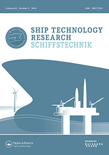
Ship Technology Research
Scope & Guideline
Innovating maritime practices for a sustainable future.
Introduction
Aims and Scopes
- Naval Architecture and Ship Design:
The journal emphasizes research on the design and optimization of ship structures, focusing on advanced modeling techniques, computational fluid dynamics (CFD), and innovative design methodologies. - Hydrodynamic Performance Analysis:
A core area of research involves the exploration of hydrodynamic interactions, including seakeeping, resistance, and propulsion performance under various operational conditions. - Marine Technology and Automation:
The integration of digital technologies, such as AI and machine learning, into marine applications is a significant focus, particularly in monitoring and optimizing ship performance. - Environmental Impact and Energy Efficiency:
Research aimed at improving the energy efficiency of ships and reducing their environmental footprint through innovative technologies and operational strategies is a priority. - Autonomous and Smart Shipping:
The journal explores the implications of autonomous shipping technologies, including design considerations and regulatory frameworks for inland and maritime operations.
Trending and Emerging
- Artificial Intelligence and Machine Learning:
There is a significant increase in studies applying AI and machine learning techniques to various ship design and operational challenges, indicating a trend towards smarter, data-driven decision-making in the maritime sector. - Digital Twin Technologies:
The application of digital twins for real-time monitoring and optimization of ship performance is gaining traction, showcasing the industry's move towards enhanced operational efficiency and predictive maintenance. - Sustainability and Eco-friendly Technologies:
Research focused on developing sustainable technologies, such as energy-efficient propulsion systems and eco-friendly materials, is increasingly prevalent, reflecting global efforts to reduce the carbon footprint of maritime operations. - Advanced Computational Methods:
The use of advanced computational methods, including CFD and numerical simulations, is on the rise, particularly in studies addressing complex fluid-structure interactions and hydrodynamic performance. - Autonomous Shipping Technologies:
A growing body of research is dedicated to the design and implementation of autonomous shipping solutions, highlighting the industry's shift towards automation and its implications for safety and efficiency.
Declining or Waning
- Traditional Shipbuilding Methods:
Research focused on conventional shipbuilding techniques has decreased, likely due to the industry's shift towards advanced manufacturing technologies, such as additive manufacturing and digital twins. - Static Performance Metrics:
There is a noticeable decline in studies solely focused on static performance metrics of ships, as the field increasingly values dynamic and real-time performance assessments through data-driven methods. - Historical Ship Design Practices:
The exploration of historical practices in naval architecture is becoming less common, as contemporary research prioritizes innovative and modern approaches to ship design and technology. - Basic Hydrodynamic Studies:
Basic studies on hydrodynamic principles without application to modern technologies are less frequently published, reflecting a trend towards more complex and application-oriented hydrodynamic research. - Single-Domain Research Focus:
Research that does not integrate multiple domains, such as environmental impact, operational efficiency, and technological innovation, is seeing reduced prominence, with a growing preference for interdisciplinary approaches.
Similar Journals
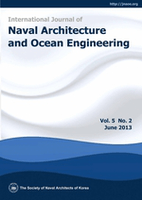
International Journal of Naval Architecture and Ocean Engineering
Pioneering sustainable solutions for the maritime industry.International Journal of Naval Architecture and Ocean Engineering is a premier academic journal dedicated to advancing the fields of naval architecture and ocean engineering. Published by the SOC NAVAL ARCHITECTS KOREA, this Open Access journal has been a vital resource for researchers and industry professionals since its founding in 2009, providing unrestricted access to high-quality, peer-reviewed articles. With a notable Q2 ranking in both Control and Systems Engineering and Ocean Engineering, it ranks among the top journals in its category, offering valuable insights into emerging technologies and methodologies. The journal’s reputation is further highlighted by its Scopus rankings, positioning it within the top 30% of journals in Ocean Engineering and the top 31% in Control and Systems Engineering as of 2023. Based in the vibrant academic hub of Seoul, South Korea, the journal invites manuscripts that explore innovative solutions and critical research to address the challenges in naval and oceanic environments, contributing to the global dialogue on sustainable maritime practices.
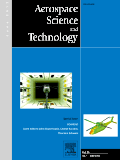
Aerospace Science and Technology
Fostering Global Collaboration in Aerospace ResearchAerospace Science and Technology, published by ELSEVIER FRANCE-EDITIONS SCIENTIFIQUES MEDICALES ELSEVIER, is a leading journal in the field of aerospace engineering, boasting an impressive 2023 Q1 ranking and a significant position in the Scopus Ranks, where it stands at Rank #7 out of 153 in the Engineering - Aerospace Engineering category, reflecting its credibility and impact with a 95th percentile ranking. Since its inception in 1997, this journal has provided a robust platform for the dissemination of pioneering research and advancements in aerospace technology, focusing on innovative methodologies and applications in the aerospace sector. With a commitment to open access, researchers, professionals, and students can easily engage with cutting-edge findings that drive the industry forward. The journal not only seeks to expand knowledge but also aims to foster collaboration among scholars across the globe, making it an essential resource for anyone looking to stay at the forefront of aerospace innovation. For more information, visit its website or refer to its dedicated address at 65 Rue Camille Desmoulins, CS50083, 92442 Issy-Les-Moulineaux, France.
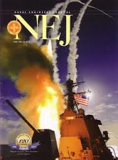
NAVAL ENGINEERS JOURNAL
Empowering engineers through knowledge and collaboration.NAVAL ENGINEERS JOURNAL, published by the American Society of Naval Engineers, serves as a pivotal platform for the dissemination of research and advancements in naval engineering. With a rich publication history dating back to 1889, this journal offers vital insights into the principles, practices, and technologies that shape the naval engineering discipline. While it does not operate under an open access model, NAVAL ENGINEERS JOURNAL remains an essential resource for researchers, professionals, and students, facilitating a deeper understanding of marine engineering challenges and innovations. It encompasses a range of topics including, but not limited to, ship design, propulsion systems, and naval architecture, making it a critical resource for practitioners and scholars committed to advancing maritime technologies. For those interested in the most recent studies and discussions in the field, this journal serves as an authoritative reference, fostering collaboration and knowledge sharing among the naval engineering community.

International Shipbuilding Progress
Elevating knowledge in the maritime sector since 1969.International Shipbuilding Progress is a distinguished journal dedicated to advancing knowledge in the fields of Mechanical and Ocean Engineering, published by IOS PRESS. With a rich history dating back to 1969 and over four decades of scholarly contributions, this journal serves as a vital platform for researchers, professionals, and students seeking to explore innovative technologies and advancements within the shipbuilding sector. Although it currently does not offer open access options, the journal is held in high regard, reflected by its Q3 ranking in both the Mechanical Engineering and Ocean Engineering categories according to the latest 2023 category quartiles. The journal aims to disseminate high-quality research findings and foster collaboration among experts globally, enhancing the maritime and shipbuilding industries. For those engaged in maritime innovation and engineering, International Shipbuilding Progress is an essential resource for staying abreast of the latest developments and research trends.

International Journal of Maritime Engineering
Charting New Waters in Environmental and Ocean EngineeringThe International Journal of Maritime Engineering (ISSN: 1479-8751, E-ISSN: 1740-0716), published by UNIV BUCKINGHAM PRESS in the United Kingdom, is a vital resource for the maritime engineering community, addressing pressing issues in both Environmental Engineering and Ocean Engineering. Established in 2006, this journal serves as a platform for disseminating innovative research, technological advancements, and practical solutions that enhance the sustainability and efficiency of maritime operations. With its current classification in the Q3 quartile for both fields in 2023, it offers valuable insights to researchers, professionals, and students who seek to bridge theoretical knowledge with industry applications. Though the journal does not operate under an open access model, it remains an essential reference for academic discourse and advancement in maritime studies through its rigorous peer-review process and high-level research outputs.
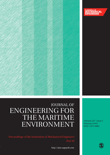
Proceedings of the Institution of Mechanical Engineers Part M-Journal of Engineering for the Maritime Environment
Exploring Sustainable Solutions for Ocean ChallengesProceedings of the Institution of Mechanical Engineers Part M - Journal of Engineering for the Maritime Environment, published by SAGE Publications Ltd, is a leading scholarly journal that addresses critical advancements in the field of maritime engineering. With an ISSN of 1475-0902 and an E-ISSN of 2041-3084, this journal serves as an essential platform for researchers and practitioners alike, disseminating original research, reviews, and case studies relevant to mechanical and ocean engineering. Recognized for its rigorous peer-review process, it currently holds a commendable Q2 ranking in both Mechanical Engineering and Ocean Engineering. The journal's reputation is bolstered by its strategic emphasis on innovative practices and sustainability in maritime environments. By providing a valuable resource for interdisciplinary collaboration, the journal facilitates the intersection of technology and engineering solutions critical for the evolving challenges within the maritime sector. Researchers, professionals, and students alike will find this journal instrumental in keeping abreast of the latest developments, best practices, and future directions in maritime engineering.
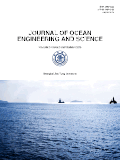
Journal of Ocean Engineering and Science
Connecting global expertise to protect our oceans.The Journal of Ocean Engineering and Science, published by Elsevier, is a prominent academic journal dedicated to advancing the field of ocean engineering and environmental sciences. Since its inception as an Open Access journal in 2016, it has rapidly gained recognition, achieving significant impact factor ratings with notable placements in the prestigious Q1 category for Ocean Engineering and Oceanography, and Q2 for Environmental Engineering in 2023. With a remarkable ranking of #3 out of 105 in Ocean Engineering and #4 out of 145 in Oceanography according to Scopus, the journal plays a critical role in disseminating cutting-edge research and innovative solutions addressing complex challenges faced by marine environments. Operating from Amsterdam, Netherlands, the Journal of Ocean Engineering and Science invites contributions from researchers, professionals, and students worldwide, emphasizing the importance of interdisciplinary approaches in achieving sustainable maritime practices.

Pomorstvo-Scientific Journal of Maritime Research
Bridging Disciplines for a Sustainable Maritime FuturePomorstvo-Scientific Journal of Maritime Research, published by the University of Rijeka's Faculty of Maritime Studies, serves as a vital platform in the fields of maritime studies and related disciplines. With an Open Access policy established since 2006, this journal fosters the dissemination of peer-reviewed research covering a diverse range of topics within Engineering, Geography, Ocean Engineering, and Social Sciences, making it an essential resource for researchers, professionals, and students alike. As of 2023, it holds a commendable profile with Q3 rankings in multiple categories, including Engineering and Geography, highlighting its ongoing commitment to quality scholarship. Accessible from Croatia, and included in Scopus with significant rankings, the journal aims to promote innovative and practical maritime research, contributing significantly to the advancement of knowledge and policy within the maritime community.
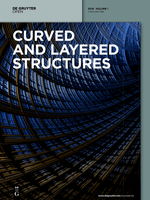
Curved and Layered Structures
Unlocking the Potential of Curved StructuresCurved and Layered Structures, published by DE GRUYTER POLAND SP Z O O, is a distinguished open-access journal that has been an essential platform since 2014 for academics and professionals in the fields of Aerospace Engineering, Architecture, Building and Construction, Civil and Structural Engineering, and Computational Mechanics. With an ISSN of 2353-7396, it is recognized for its impactful contributions, reflected in its impressive category quartiles, particularly Q1 in Architecture and notable rankings in various engineering disciplines. The journal's scope encompasses innovative research focusing on the intricate designs and applications of curved and layered structures, making it pivotal for advancing knowledge in these areas. The open-access format ensures widespread dissemination of research findings, promoting accessibility and collaboration among researchers and practitioners worldwide. As it navigates its converged years from 2014 to 2024, Curved and Layered Structures continues to attract high-quality submissions that push the boundaries of engineering and architectural design.

TransNav-International Journal on Marine Navigation and Safety of Sea Transportation
Connecting Research and Safety in Sea Transportation.TransNav - International Journal on Marine Navigation and Safety of Sea Transportation is a leading scholarly publication that addresses the critical themes of marine navigation and maritime safety. Published by Gdynia Maritime University in Poland, this open-access journal has been a vital resource since its inception in 2007, fostering a global dialogue among researchers, maritime professionals, and students. With an impressive trajectory of convergence from 2019 to 2024, TransNav is recognized for its impact in the realm of Ocean Engineering, Oceanography, and Transportation, holding a notable Q3 ranking in Ocean Engineering and Q4 rankings in both Oceanography and Transportation for 2023. The journal serves as an essential platform for disseminating research findings and advancements that enhance safety protocols and navigation strategies in sea transportation, thus contributing to the sustainability and efficiency of maritime operations worldwide. Researchers can access its wealth of information through various academic databases, ensuring that your work remains on the cutting edge of this vital field.